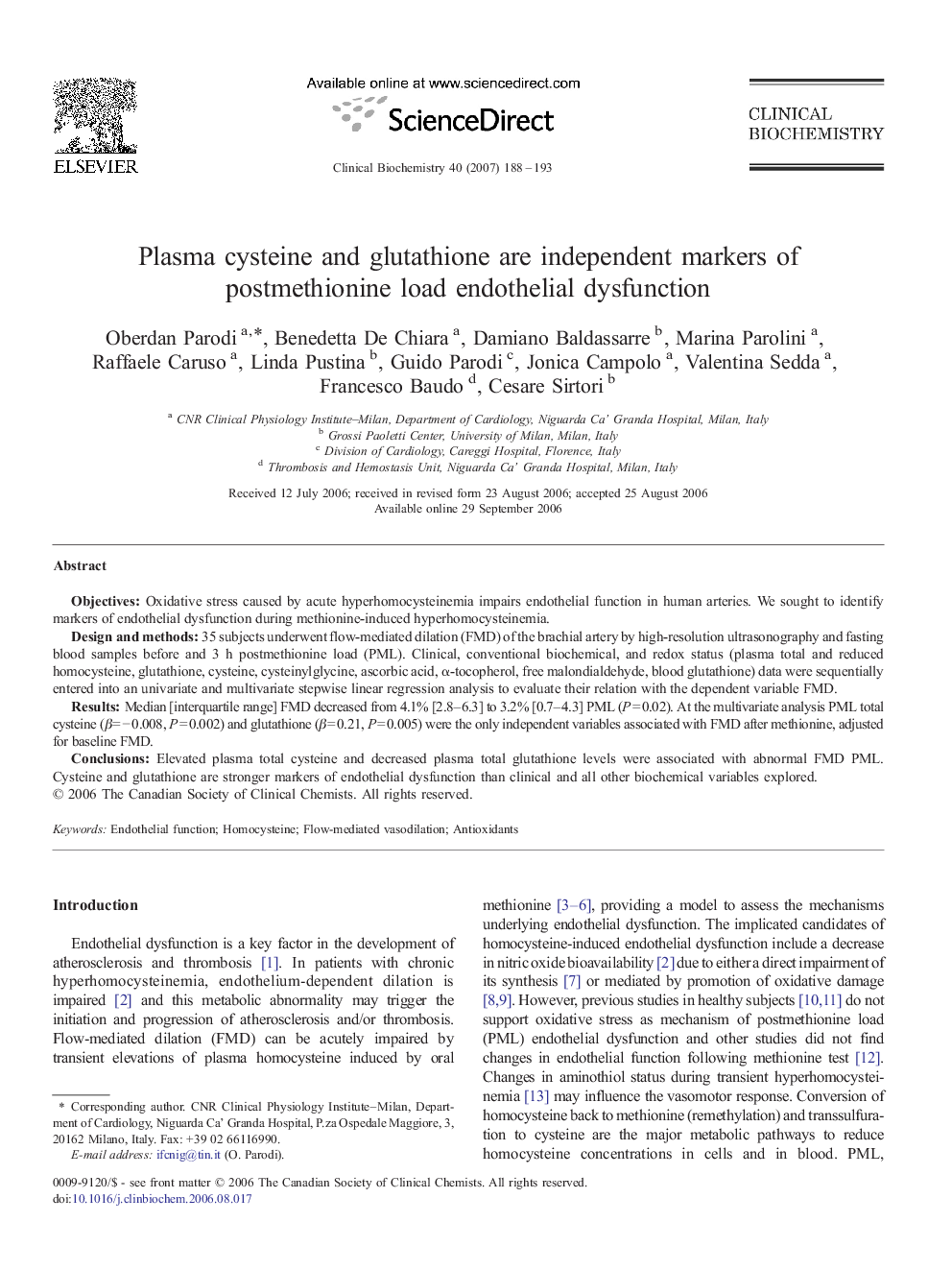| Article ID | Journal | Published Year | Pages | File Type |
|---|---|---|---|---|
| 1971698 | Clinical Biochemistry | 2007 | 6 Pages |
Objectives:Oxidative stress caused by acute hyperhomocysteinemia impairs endothelial function in human arteries. We sought to identify markers of endothelial dysfunction during methionine-induced hyperhomocysteinemia.Design and methods:35 subjects underwent flow-mediated dilation (FMD) of the brachial artery by high-resolution ultrasonography and fasting blood samples before and 3 h postmethionine load (PML). Clinical, conventional biochemical, and redox status (plasma total and reduced homocysteine, glutathione, cysteine, cysteinylglycine, ascorbic acid, α-tocopherol, free malondialdehyde, blood glutathione) data were sequentially entered into an univariate and multivariate stepwise linear regression analysis to evaluate their relation with the dependent variable FMD.Results:Median [interquartile range] FMD decreased from 4.1% [2.8–6.3] to 3.2% [0.7–4.3] PML (P = 0.02). At the multivariate analysis PML total cysteine (β = − 0.008, P = 0.002) and glutathione (β = 0.21, P = 0.005) were the only independent variables associated with FMD after methionine, adjusted for baseline FMD.Conclusions:Elevated plasma total cysteine and decreased plasma total glutathione levels were associated with abnormal FMD PML. Cysteine and glutathione are stronger markers of endothelial dysfunction than clinical and all other biochemical variables explored.
